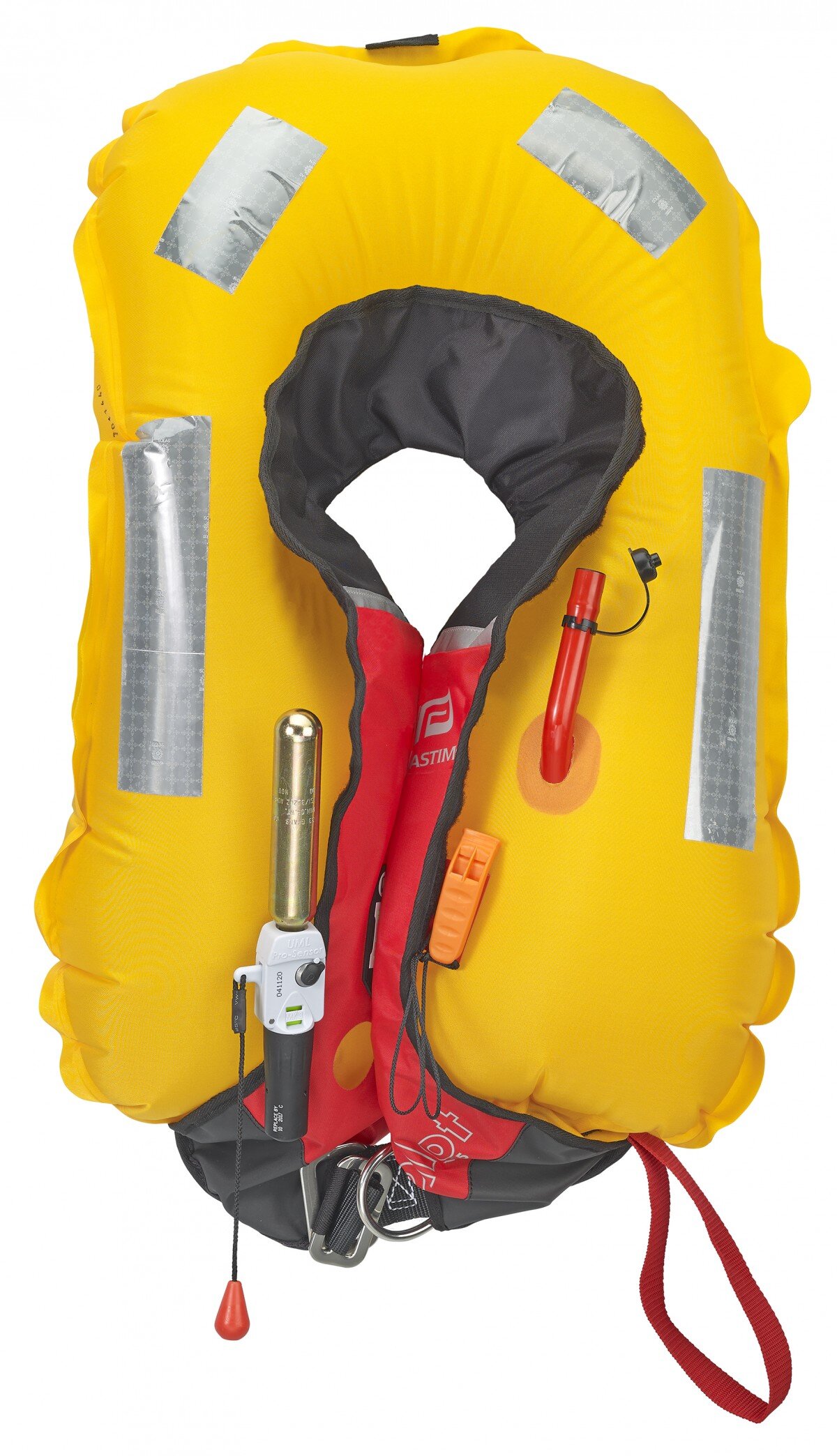What Life Jacket Do I Need?
Firstly, it is good to see you are looking at purchasing life jackets for you and the occupants on your boat. Life jackets can really make the difference to the outcome should a person fall in the water. In this article we’re going to look at what makes a life jacket a life jacket and the factors you’ll need to take in to account when deciding which life jacket to purchase.
Ryan Tozer, Managing Director and RYA Principal of iPowerboat Ltd, answers the most common questions that many new powerboat owners have regarding training.
Ryan is an expert instructor for everything involved around powerboating to offshore survival, and has trained thousands of people to operate them safely in both the leisure and commercial sectors.
What is a life jacket?
All buoyancy worn by people falls into a category called a “Personal Floatation Device” or PFD. A life jacket is one type of PFD, others include items such as “buoyancy aids”.
“Buoyancy Aid” or “Life Jacket” - are they the same?
Buoyancy aids are usually inherent buoyancy (foam filled) PFD’s that are designed to aid a persons buoyancy. They’ll help non-swimmers float and swim. They are primarily designed for people participating in water sports such as dinghy sailing, kayaking and windsurfing to name a few.
The nature of these activities means you are likely to end up in the water, so your buoyancy needs to work for you numerous times during the day.
Buoyancy aids will not turn an unconscious person over and keep their head/airway out of the water, and therefore are not always appropriate for sports such as powerboating or sailing on yachts. A life jacket of the correct size, well maintained and worn correctly will turn an unconscious person over, and keep the head above water.
Life jackets can be either inherent buoyancy (foam filled) or inflation via a compressed carbon dioxide cylinder. As foam filled life jackets are quite bulky, they tend to not be too comfortable, and therefore not worn. The main purpose of these life jackets is for abandonment purposes. The gas inflation lifejackets (some times called “horse shoes” due to their shape) are the most popular. They come in a variety of colours, different features and sizes.
Life Jacket Sizes.
Life jackets are not measured in Small, Medium, and Large. Instead they are measured in Newtons of buoyancy.
The buoyancy aids we mentioned earlier provide 50N of buoyancy (approximately 5kg of lift).
Life jackets start at 100N of buoyancy.
100N is primarily designed for a child.
150N is primarily design for the average UK adult.
275N is designed for people working far offshore, and those who may be carrying some equipment.
Some manufacturers make other sizes in between such as 190N. Based on your weight, how far offshore you intend to go, and whether or not you carry equipment such as tools etc, will allow you to make a decision on the correct size.
Automatic or manual.
Co2 inflation life jackets can be fitted with 3 different types of firing system.
Manual Operation
These life jackets inflate on the user pulling the pull cord. The benefits of this is they are not accidently inflated due to spray, but the disadvantage of this is the user has to be conscious to operate it. This system is suited to those where becoming unconscious in the water is not a likelihood.
Automatic Operation
Automatic life jackets operate on the principle of becoming wet. An automatic firing cartridge is located below the firing system (as per the picture above). These cartridges do expire, so ensure it is in date. This life jacket will function without the requirement for a person to pull the cord, although a cord is provided should the user require it. On extremely wet days, and on open boats, these life jackets can inadvertently inflate.
Hammar Operation
Hammar units operate on the principle of being submerged in water, and are triggered by water pressure, therefore preventing accidental inflation. These valves have expiry dates. From our experience on RYA Sea Survival courses, the Hammar unit can fail to function if the person is also wearing a floatation suit, as this prevents the person from going to the required depth for the unit to activate.
Life jacket fitment.
Useless unless worn correctly. Time and time again, we still see people going to the effort of purchasing life jackets, and then fitting them incorrectly which can result in the life jacket not achieving what it was designed to do.
The main buckle should be tight enough so that you cannot get anything bigger than your closed fist between your tummy and the buckle. If it is too loose, the life jacket can ride up, and could even come off your body.
Crotch straps are highly recommended, and should be worn to ensure correct fitment. The purpose of these is to help prevent the life jacket riding over your head, and to keep the life jacket correctly positioned on the person.
A simple test you can carry out to ensure your life jacket is well fitted is to have another person to try and lift the life jacket off you. It it rides up significantly, then adjustments need to be made.
During your day at sea, you may wear more or less layers of clothing depending on the weather. Each time clothing is added/removed, the life jacket should be adjusted to suit.
Life jacket checks & servicing.
Life jackets need to be checked to ensure they are going to operate as intended. It is recommended that checks are visually carried out by the user daily. Annual servicing is recommended, and in my opinion, should be carried out by a life jacket servicing company. Costs for this can be vague, but from experience, a service costs £12, and if there is anything wrong with the life jacket, then the cost of repairing/replacing parts is charged on top.
Here is a video showing you what, and how to check…
Are the courses like going back to school?
As you are learning something new, then yes, but that’s where the similarities end. The courses have an entirely different approach and environment. I teach powerboating, because I love powerboating, yet I hated school!
The courses are fun, and delivered in a manner where you are learning without realising it. Making mistakes are a huge part of the courses. The instructor’s role is to create parameters for each situation to minimise risk. Making the mistake will allow you to understand how not to do it, therefore allowing the skill to be developed and improved.
Why iPowerboat, and what’s so special about us?
Ryan founded iPowerboat nearly 10 years ago, and like other UK training centres is recognised to run RYA approved training courses. What makes iPowerboat unique is our passion, teaching approach, equipment… and of course our magnificent location!
Having trained thousands of people, and regularly training a thousand students per year, with students traveling from all over the world – literally! iPowerboat is a very successful and respected training centre. If you’re a boater on the west coast of Scotland then there is a high chance, you’ll meet someone who trained here.
Expert knowledge, approach and reputation puts us in a position where we have the trust of large commercial organisations to meet their training needs.
Our equipment is some of the best. Our training RIBs are built for your needs. Don’t take my word for it, come to our training centre, or visit our website to see our boats and equipment. You’ll leave your course with the best value for money purchase since buying your boat!



